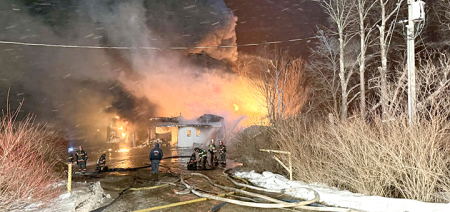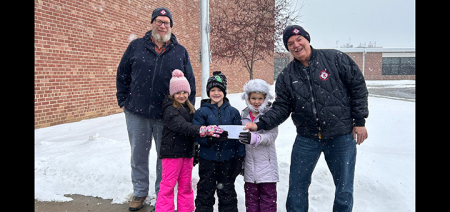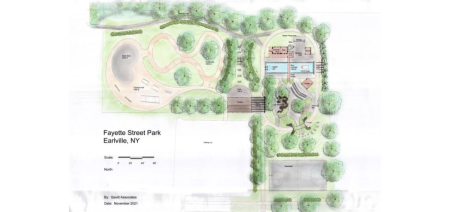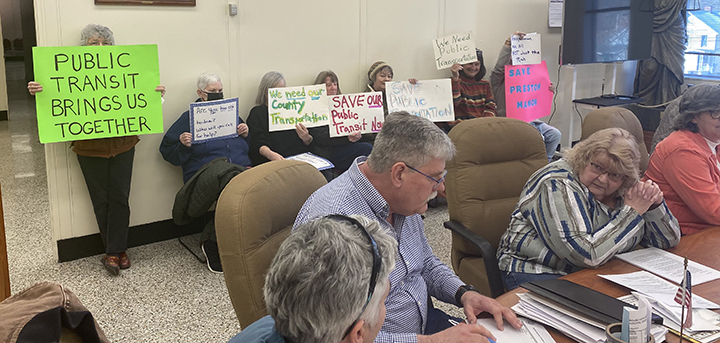Outdoor Chenango: Thinking About Fall
Published:
May 21st, 2025
By:
Eric Davis
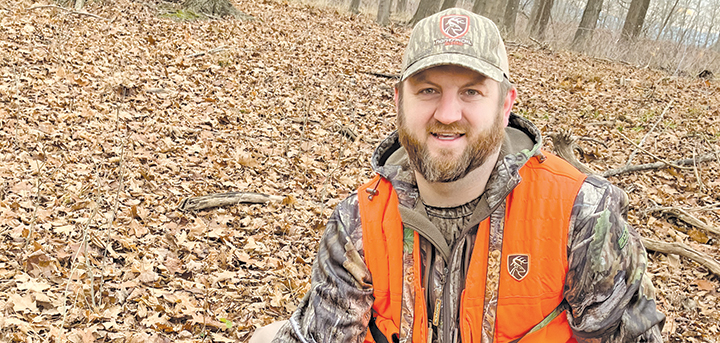
It is usually around this time during turkey season that I will notice some deer starting to grow nubs at the base of their antlers. I find it interesting how they can go from nothing there to a small fuzzy knob to full antlers in a matter of a few months. Seeing a buck starting his antler growth also sparks me with a little deer hunting adrenaline. I remember things I wanted to do either before or after last season that I never did, or something new I wanted to try. Unfortunately, this year the extremely wet weather may dampen, pun intended, my early preparations for this fall. In the meantime, it may benefit you to create a list of things you want to do and to rank them in terms of greatest priority to least important. Here are a few possible projects you could consider if you need some inspiration.
Planting a food plot can be a time intensive project that requires multiple days of work but can lead to a great return on investment when deer season comes around. The first thing to do is to pick out the location where you want to put the food plot. While giant open spaces seem like a great spot, deer usually will end up feeding there under the cover of darkness. A smaller, slightly concealed open space such as an old clearing in the middle of the woods allows deer to feel more secure when approaching the food plot and gives you more places to put stands or blinds. Once you have a location picked, having the soil analyzed will save you from putting down expensive seed to have it barely grow or not grow at all. Once the results come back, you will know what to add to the soil to make it ideal for optimal plant growth. Picking what to plant can be difficult too. In the earlier portions bow season, a clover plot may attract deer best while in the late muzzleloader season sugar beets or radishes can draw deer from all around if there is a couple of inches of snow on the ground. Once you pick the plant or plants you want to use, check with the suggested planting dates from the seed company. If you pick a plant that doesn’t need to be planted until July, then you can focus on some other things now. Or vice versa, pick a late May to early June plant date and be freed up in July and August.
Picking treestand locations this early can be tricky as deer might change their travel pattern, especially if you put in a new food plot. However, almost everyone has had the mental discussion during deer season of moving a stand to another location, even if it’s only 30 yards away. Go out and do it now, before you get too busy in the summer and you never get around to it. Remember all the safety aspects that go into using a treestand should be used when setting them up. Always wear a full-body harness whenever you leave the ground and set treestands with a partner. Use a linesman’s strap when setting up stands until you can put the regular tree strap up to hook your harness into.
Some select cuts with a limb saw can make a big difference as to how much sunlight is getting to other plants nearby. Thinning out the areas around apple or pear trees will let the fruit trees grow better and produce more fruit this fall. You cannot beat a good apple tree thicket during early bow season. You can also cut entire trees down to help free up resources to other trees. Known as crop tree release, this will allow the surviving neighbors to get more sunlight as well as minerals and water from the soil. This is a popular tactic around oak trees so that they can produce more acorns.
May and June might seem too early to some hunters to put trail cameras up but starting to get an idea of what deer are around the property is never a bad thing. Trail cameras are very low on the labor-intensity scale. Once they are put on the tree they do all the work, you just need to go check the memory cards. Or of you buy one with a wireless plan, the camera can email the pictures it takes directly to your email so you don’t have to go to the camera to get them. This minimizes disturbance and the addition of human odors to the area.
No matter what you decide to do, even if you decide to do nothing, there is no replacement for the time you spend outdoors. Get outside, enjoy the fresh air, and remember to invite someone who hasn’t done it before to join you.
Author: Eric Davis - More From This Author
Comments
